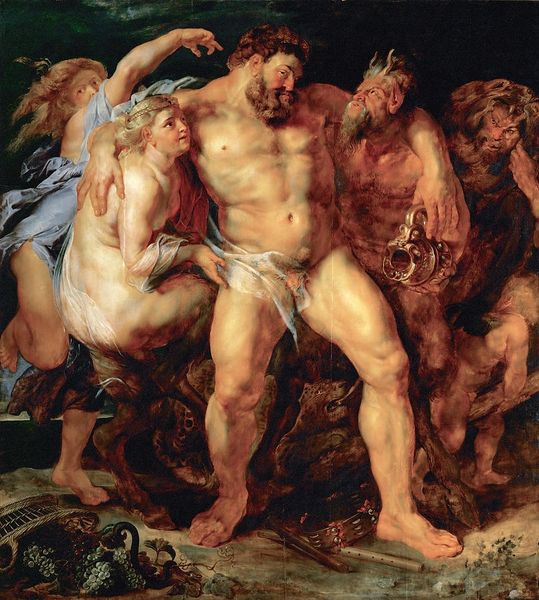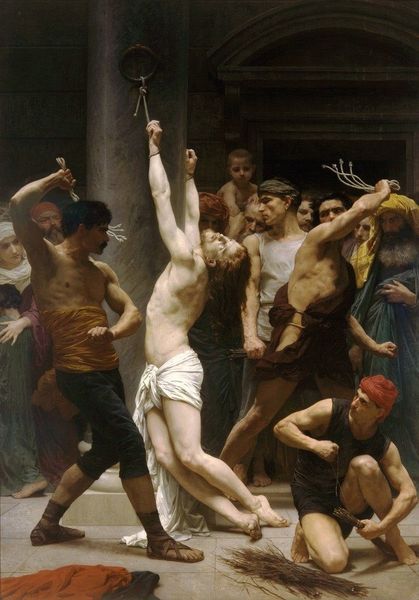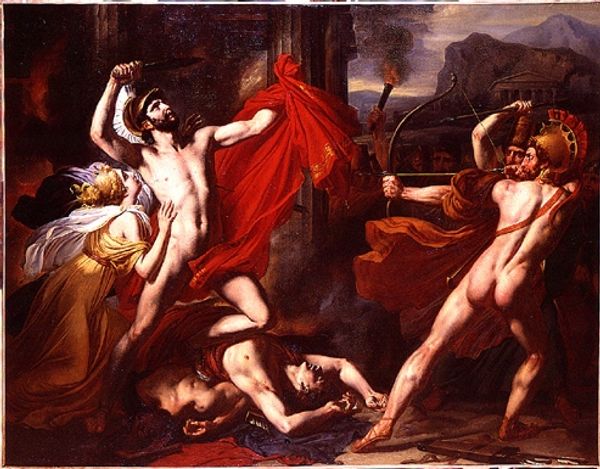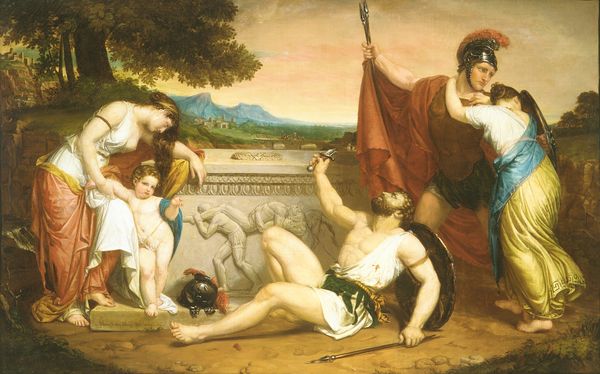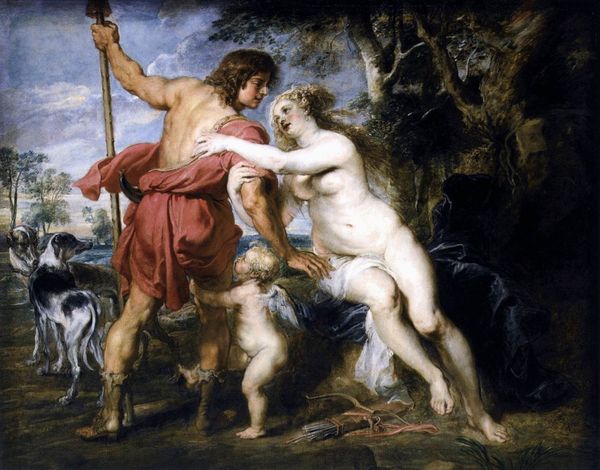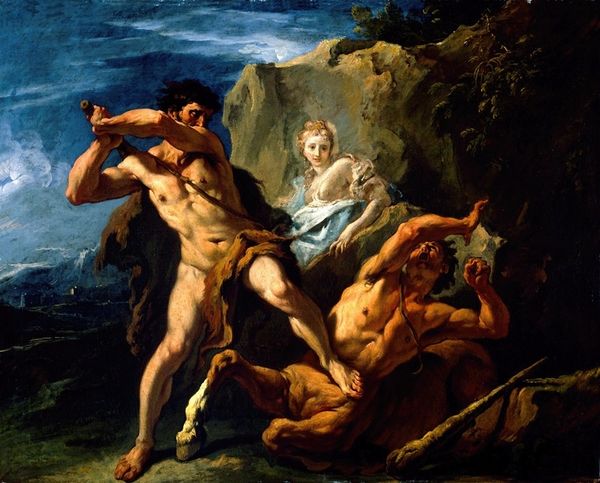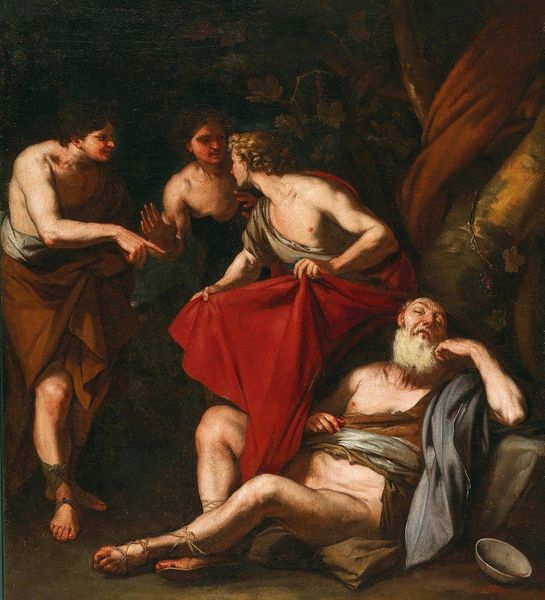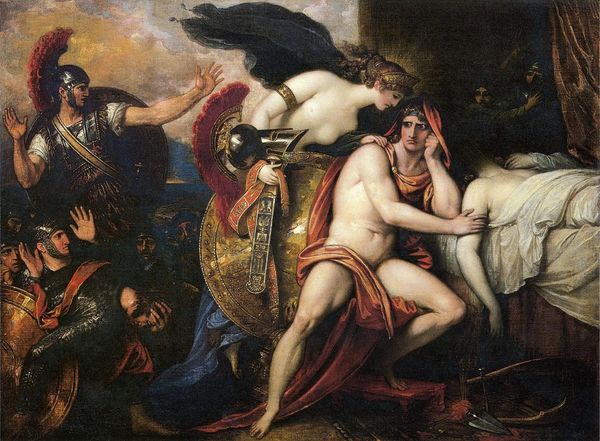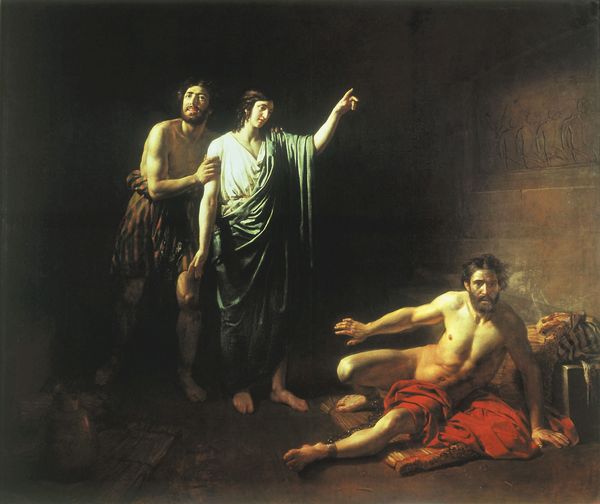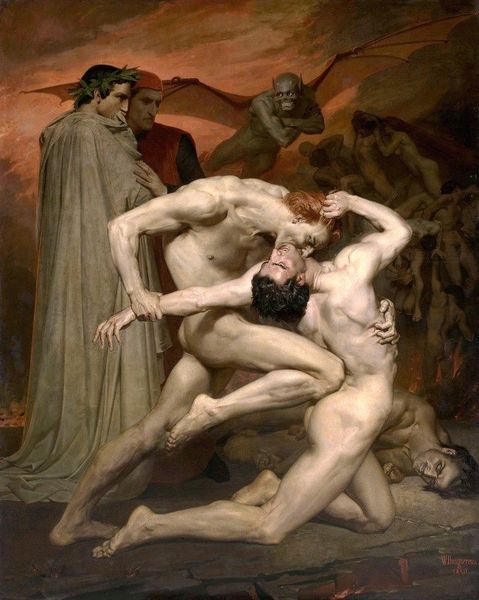
Copyright: Public Domain: Artvee
Curator: William Bouguereau painted "Orestes Pursued by the Furies" in 1862. It’s an oil on canvas depicting a scene from Greek mythology. Editor: A chaotic vision! The composition is dramatic, full of frantic energy, dark tones contrasted by the bright skin tones of the figures. It’s intensely theatrical. Curator: Indeed. Bouguereau’s formal precision is undeniable. The balance between light and shadow, the precise rendering of the bodies… he clearly demonstrates mastery of the academic tradition. The pyramidal structure, with Orestes at its apex, effectively conveys tension. Editor: Beyond the formal skill, it’s the Furies themselves that fascinate me. As symbols of guilt and vengeance, they tap into primal fears. Snakes in their hair, torches, clawing hands—they represent the inescapable consequences of wrongdoing. This potent symbolism links to universal themes of justice, conscience, and the psychological burden of our actions. Note how their expressions embody pure rage, fueled by a moral imperative. Curator: Consider also how Bouguereau uses color. The red cloak draws the eye, creating a focal point, but it also serves as a visual metaphor for blood, death, and Orestes’s transgression. It functions almost like a semiotic marker. The textures, meticulously rendered, from the smooth skin to the coarse stone beneath Orestes’s feet, add to the painting’s impact. Editor: Precisely. Red not only embodies death and transgression, it signifies passionate bloodlust for Orestes from the Furies. They’re driven by a desire for catharsis and resolution. They also raise the cultural impact of parricide, which carried tremendous weight. The female figure in white who holds the bloody knife has its own set of psychological underpinnings to decipher, especially the burden of Orestes. Curator: In dissecting this painting, both through a formal lens and through your interpretation of its powerful symbolism, we are able to reach a broader insight. Editor: Ultimately, by examining symbols, this work makes its ancient theme remarkably relevant. It's a window into cultural anxieties, as relevant now as it was then.
Comments
No comments
Be the first to comment and join the conversation on the ultimate creative platform.


